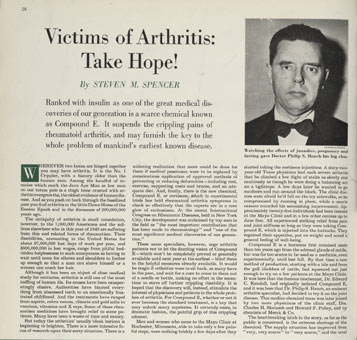Career Milestones

"Wonder Drug" (1949)
Scientists
from Minnesota's Mayo Clinic made headlines in 1949 when they discovered that
the steroid cortisone could ease the symptoms of rheumatoid arthritis. This
painful disease, which even today affects more than two million Americans,
cripples patients by inflaming their joints and destroying cartilage. But cortisone was extremely scarce, and the sudden demand created by the Mayo Clinic's dramatic announcement drove prices up over $4,000 an ounce—and sent scientists scrambling for new ways to make it.
While many chemists attempted to produce the chemical from scratch, Julian
tried a seemingly simpler approach: synthesizing an almost identical steroid
called Compound S, which needed just one oxygen atom to become cortisone.
Scientists from Michigan's Upjohn Company soon discovered that a common mold
could provide Compound S with the needed atom, eventually making the steroid a
key ingredient in cortisone production, just as Julian had predicted.